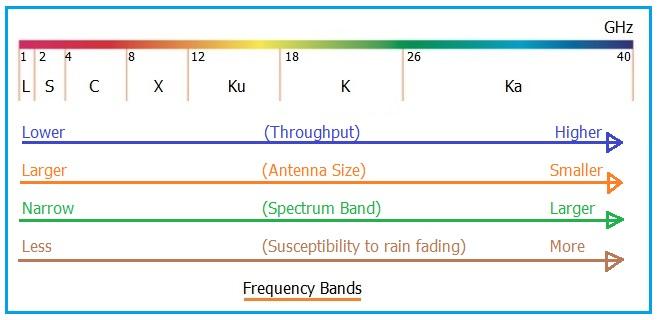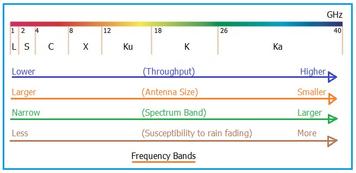S Band Frequency Range and Wavelength Explained
Advertisement
The S band is a portion of the electromagnetic spectrum, specifically the range of frequencies from 2 GHz to 4 GHz. Let’s explore its characteristics, including wavelength, applications, advantages, and disadvantages.
| Frequency Band | Frequency Range | Wavelength | Coverage Range (Km) |
|---|---|---|---|
| S Band | 2 to 4 GHz | 15 to 7.5 cm | Several thousand kilometers to transcontinental or even global coverage |
The S band frequency sits neatly between the L Band and C Band. As highlighted in the table, it spans from 2 GHz to 4 GHz in the frequency spectrum, corresponding to wavelengths of 7.5 to 15 centimeters.
While it may necessitate antennas of a larger size, the S band offers notable benefits. The range for satellite communications within the S band hinges on factors like the precise frequency used, antenna dimensions, transmit power, and atmospheric conditions.
Geostationary communication satellites utilizing S band frequencies typically provide coverage extending from thousands of kilometers to even global scales, depending on the satellite’s design and operational parameters.
It’s worth noting that the higher end of the S band (around 4 GHz) may exhibit slightly shorter range compared to the lower end (around 2 GHz).
S Band Advantages
Here’s a breakdown of the benefits of using the S Band:
- The S band strikes a good balance between resolution and range in radar systems, making them versatile for surveillance and detection tasks.
- S band systems are recognized for their dependability and resilience to signal interference, rendering them suitable for critical applications in aviation and maritime sectors.
- S band radar delivers more accurate data thanks to its relatively shorter wavelengths, a feature leveraged in weather forecasting and air traffic control (ATC).
- Satellite communication systems functioning in the S band facilitate global coverage, guaranteeing connectivity in remote or underserved regions.
S Band Disadvantages
However, there are also some drawbacks to consider:
- S-band frequencies are susceptible to rain attenuation, particularly in areas with heavy rainfall. This may necessitate supplementary mitigation strategies to ensure reliable communication.
- S band systems typically require larger antennas compared to L band systems. This can be a limitation in scenarios where antenna size and weight are paramount concerns.
S Band Frequency Applications

Here’s a look at the diverse applications of the S Band frequency:
- The S band’s compromise between resolution and range makes it well-suited for various radar applications, including weather radar, ATC radar, and surveillance radar, serving both military and civilian needs.
- Certain satellite communication systems utilize the S-band for telemetry and tracking, as well as for uplink communication (Ground to Satellite) in some satellite TV broadcasting systems.
- S band frequencies find use in aviation communication and navigation systems, such as radar altimeters and collision avoidance systems.
- S band radar is employed for maritime surveillance, navigation, and collision avoidance, particularly in coastal and harbor areas.
- The S band supports data collection and analysis in scientific research fields like radio astronomy and atmospheric studies.
- Earth observation and remote sensing satellites may transmit data back to Earth using S band frequencies.
- Mobile satellite services like Inmarsat rely on the S band for communication with mobile terminals and devices.
- It facilitates multimedia applications like mobile TV & satellite radio.
- It is incorporated in consumer electronic appliances such as microwave ovens and Bluetooth headphones.
- It is used in Optical communications within the 1460 to 1530 nm wavelength range.
Advertisement
 RF
RF




